预约演示
更新于:2025-12-02
TET1 inhibitor(Beckman Research Institute)
更新于:2025-12-02
概要
基本信息
药物类型 蛋白水解靶向嵌合体(PROTAC) |
别名- |
靶点 |
作用方式 降解剂 |
作用机制 TET1 降解剂(tet methylcytosine dioxygenase 1 degraders) |
在研适应症 |
非在研适应症- |
非在研机构- |
权益机构- |
最高研发阶段临床前 |
首次获批日期- |
最高研发阶段(中国)- |
特殊审评- |
关联
100 项与 TET1 inhibitor(Beckman Research Institute) 相关的临床结果
登录后查看更多信息
100 项与 TET1 inhibitor(Beckman Research Institute) 相关的转化医学
登录后查看更多信息
100 项与 TET1 inhibitor(Beckman Research Institute) 相关的专利(医药)
登录后查看更多信息
8
项与 TET1 inhibitor(Beckman Research Institute) 相关的文献(医药)2024-02-01·Bioorganic & medicinal chemistry
Selective targeting of human TET1 by cyclic peptide inhibitors: Insights from biochemical profiling
Article
作者: Schofield, Christopher J ; McAllister, Tom E ; Saraç, Hilal ; Salah, Eidarus ; Nishio, Kosuke ; Tumber, Anthony ; Kawamura, Akane ; Corner, Thomas P ; Suga, Hiroaki ; Šimelis, Klemensas ; Belle, Roman
Ten-Eleven Translocation (TET) enzymes are Fe(II)/2OG-dependent oxygenases that play important roles in epigenetic regulation, but selective inhibition of the TETs is an unmet challenge. We describe the profiling of previously identified TET1-binding macrocyclic peptides. TiP1 is established as a potent TET1 inhibitor (IC50 = 0.26 µM) with excellent selectivity over other TETs and 2OG oxygenases. TiP1 alanine scanning reveals the critical roles of Trp10 and Glu11 residues for inhibition of TET isoenzymes. The results highlight the utility of the RaPID method to identify potent enzyme inhibitors with selectivity over closely related paralogues. The structure-activity relationship data generated herein may find utility in the development of chemical probes for the TETs.
2023-08-01·Bioelectrochemistry (Amsterdam, Netherlands)
A highly sensitive signal-on biosensor based on restriction enzyme-mediated molecular switch for detection of TET1
Article
作者: Chen, Chen ; Chen, Zilin ; Wang, Fang ; Cheng, Ying
Ten-eleven translocation 1 (TET1) is a member of the TET enzyme family of dioxygenases, which plays an important role in active DNA demethylation. Therefore, the sensitive TET1 detection could help us better understand DNA methylation-demethylation in epigenetics. Here we report a detection method that consists of electrode fabrication, TET1 modification, DNA digestion, signal-on oxidoreduction, and current peak monitoring. An exquisitely designed 5'end-G-rich oligodeoxynucleotide was synthesized bearing a methylated cytosine (5-mC), which formed into hairpin dsDNA with the MspI recognition sequence (CmCGG/GGCC). Then hairpin dsDNA was fabricated onto gold nanoparticles modified glassy carbon electrode (DNA/AuNPs/GCE) via Au-S bond. The combination uses of restriction enzyme MspI and hemin converted fabricated-dsDNA into peroxidase-mimicking DNAzyme, thereby promoting the reduction of H2O2 with a current peak. However, the current peak was extremely decreased once TET1 and T4 β-GT were used in advance. We confirmed a delicately linear relationship matching between the current difference and TET1 activity from 0.7 to 10.5 ng μL-1 with a detection limit of 0.027 ng μL-1, which outcompeted the former methods at least one order of magnitudes. The TET1 activity evaluation in the existence of Bobcat339 was also tested as the proof of concept of inhibitors screening. Our strategy provides a novel, label-free, and sensitive electrochemical approach that enables us to complete both TET1 activity evaluation and potential TET1 inhibitors screening.
2023-03-29·Science translational medicine1区 · 医学
Phosphorylation stabilized TET1 acts as an oncoprotein and therapeutic target in B cell acute lymphoblastic leukemia
1区 · 医学
Article
作者: Nguyen, Le Xuan Truong ; Qing, Ying ; He, Xin ; Wang, Kitty ; Cai, Zhenming ; Wu, Dong ; Marcucci, Guido ; Li, Yangchan ; Huang, Huilin ; Small, Andrew ; Chen, Zhenhua ; Han, Li ; Chen, Jianjun ; Shi, Yanhong ; Ngo, Vu N ; Zhang, Zheng ; Su, Rui ; Müschen, Markus ; Tan, Brandon ; Gu, Zhaohui ; Deng, Xiaolan ; Qian, Zhijian ; Xiao, Gang ; Xu, Mingjiang ; Leung, Keith ; Wu, Xiwei ; Chao, Jianfei ; Qin, Hanjun ; Sheng, Yue ; Zhao, Zhicong ; Zhou, Keren ; Chen, Yu ; Qin, Xi ; Weng, Hengyou ; Xue, Jianhuang ; Zhang, Bin ; Prince, Emily ; Shen, Chao ; Dong, Lei ; Li, Wei
Although the overall survival rate of B cell acute lymphoblastic leukemia (B-ALL) in childhood is more than 80%, it is merely 30% in refractory/relapsed and adult patients with B-ALL. This demonstrates a need for improved therapy targeting this subgroup of B-ALL. Here, we show that the ten-eleven translocation 1 (TET1) protein, a dioxygenase involved in DNA demethylation, is overexpressed and plays a crucial oncogenic role independent of its catalytic activity in B-ALL. Consistent with its oncogenic role in B-ALL, overexpression of TET1 alone in normal precursor B cells is sufficient to transform the cells and cause B-ALL in mice within 3 to 4 months. We found that TET1 protein is stabilized and overexpressed because of its phosphorylation mediated by protein kinase C epsilon (PRKCE) and ATM serine/threonine kinase (ATM), which are also overexpressed in B-ALL. Mechanistically, TET1 recruits STAT5B to the promoters of
CD72
and
JCHAIN
and promotes their transcription, which in turn promotes B-ALL development. Destabilization of TET1 protein by treatment with PKC or ATM inhibitors (staurosporine or AZD0156; both tested in clinical trials), or by pharmacological targeting of STAT5B, greatly decreases B-ALL cell viability and inhibits B-ALL progression in vitro and in vivo. The combination of AZD0156 with staurosporine or vincristine exhibits a synergistic effect on inhibition of refractory/relapsed B-ALL cell survival and leukemia progression in PDX models. Collectively, our study reveals an oncogenic role of the phosphorylated TET1 protein in B-ALL independent of its catalytic activity and highlights the therapeutic potential of targeting TET1 signaling for the treatment of refractory/relapsed B-ALL.
100 项与 TET1 inhibitor(Beckman Research Institute) 相关的药物交易
登录后查看更多信息
研发状态
10 条进展最快的记录, 后查看更多信息
登录
| 适应症 | 最高研发状态 | 国家/地区 | 公司 | 日期 |
|---|---|---|---|---|
| 前体B细胞成淋巴细胞白血病淋巴瘤 | 临床前 | 美国 | 2023-03-29 |
登录后查看更多信息
临床结果
临床结果
适应症
分期
评价
查看全部结果
| 研究 | 分期 | 人群特征 | 评价人数 | 分组 | 结果 | 评价 | 发布日期 |
|---|
No Data | |||||||
登录后查看更多信息
转化医学
使用我们的转化医学数据加速您的研究。
登录
或
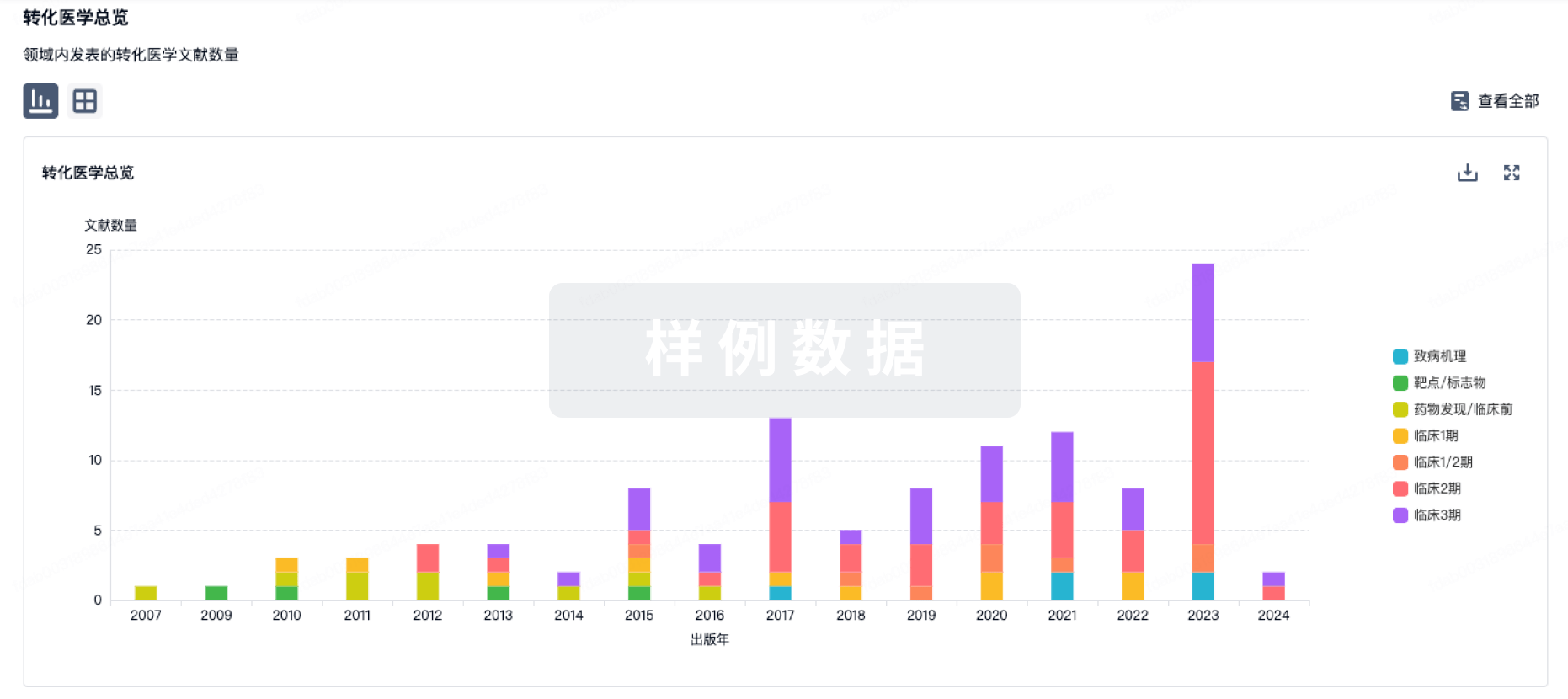
药物交易
使用我们的药物交易数据加速您的研究。
登录
或
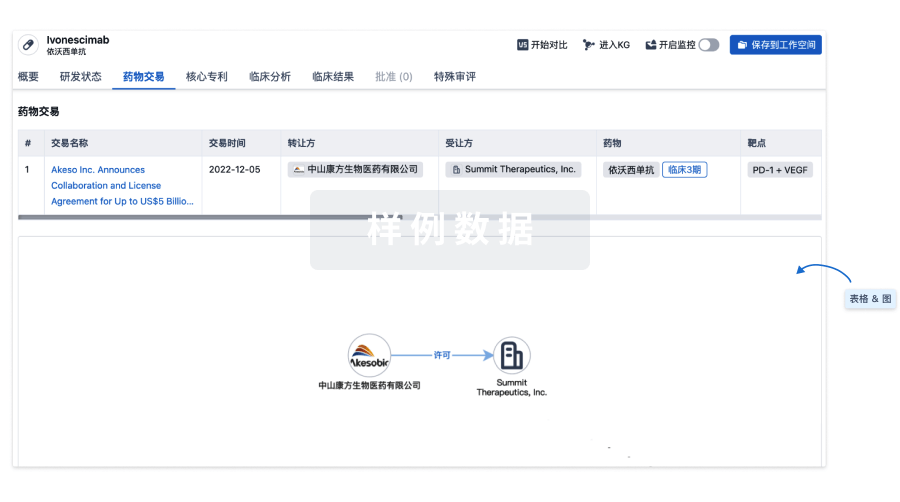
核心专利
使用我们的核心专利数据促进您的研究。
登录
或
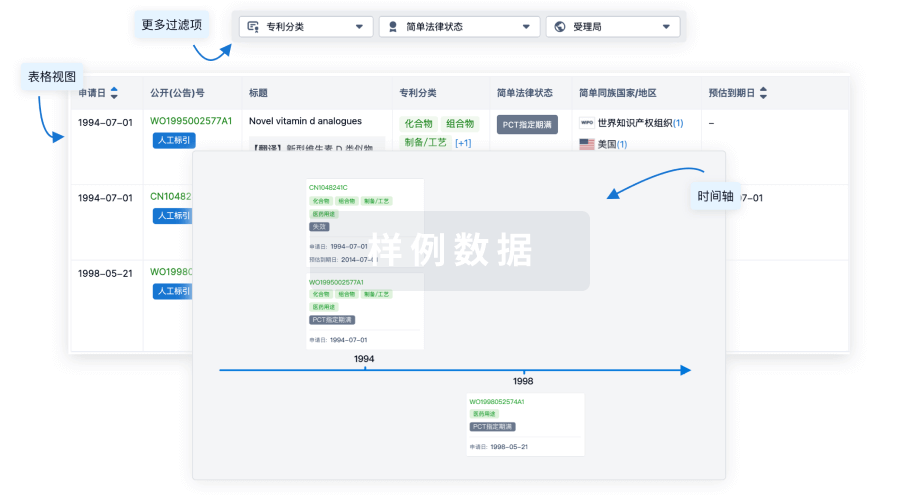
临床分析
紧跟全球注册中心的最新临床试验。
登录
或
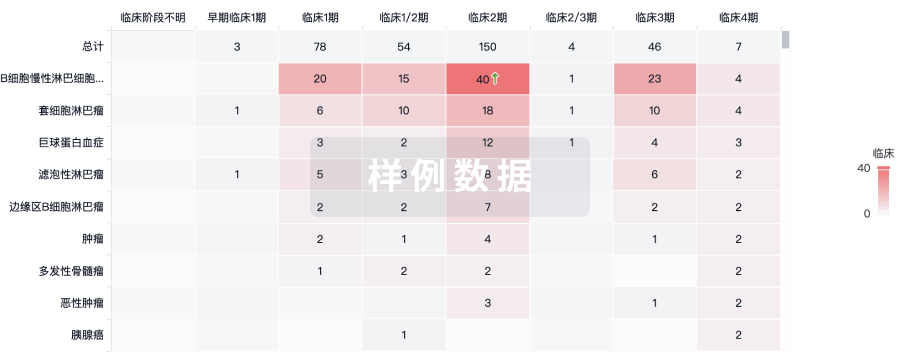
批准
利用最新的监管批准信息加速您的研究。
登录
或
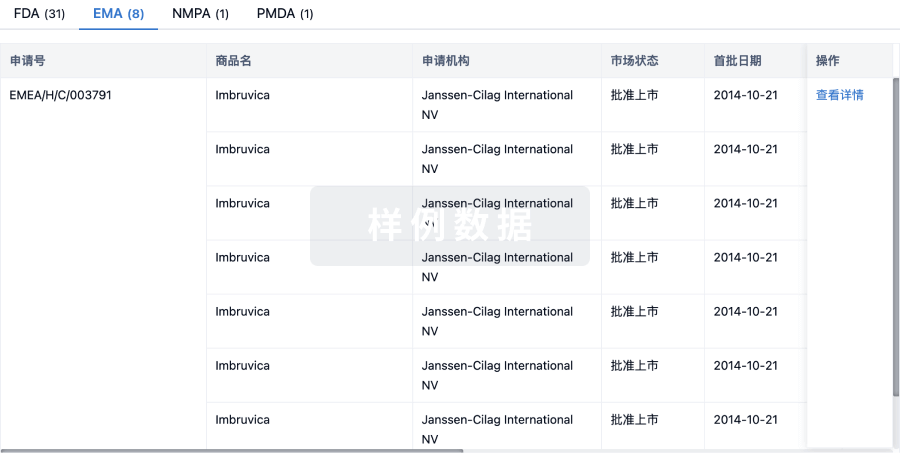
特殊审评
只需点击几下即可了解关键药物信息。
登录
或
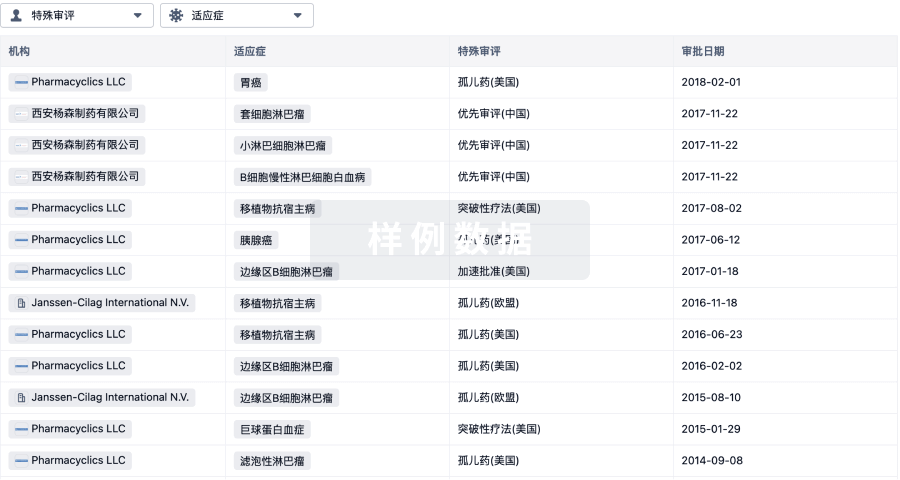
生物医药百科问答
全新生物医药AI Agent 覆盖科研全链路,让突破性发现快人一步
立即开始免费试用!
智慧芽新药情报库是智慧芽专为生命科学人士构建的基于AI的创新药情报平台,助您全方位提升您的研发与决策效率。
立即开始数据试用!
智慧芽新药库数据也通过智慧芽数据服务平台,以API或者数据包形式对外开放,助您更加充分利用智慧芽新药情报信息。
生物序列数据库
生物药研发创新
免费使用
化学结构数据库
小分子化药研发创新
免费使用
